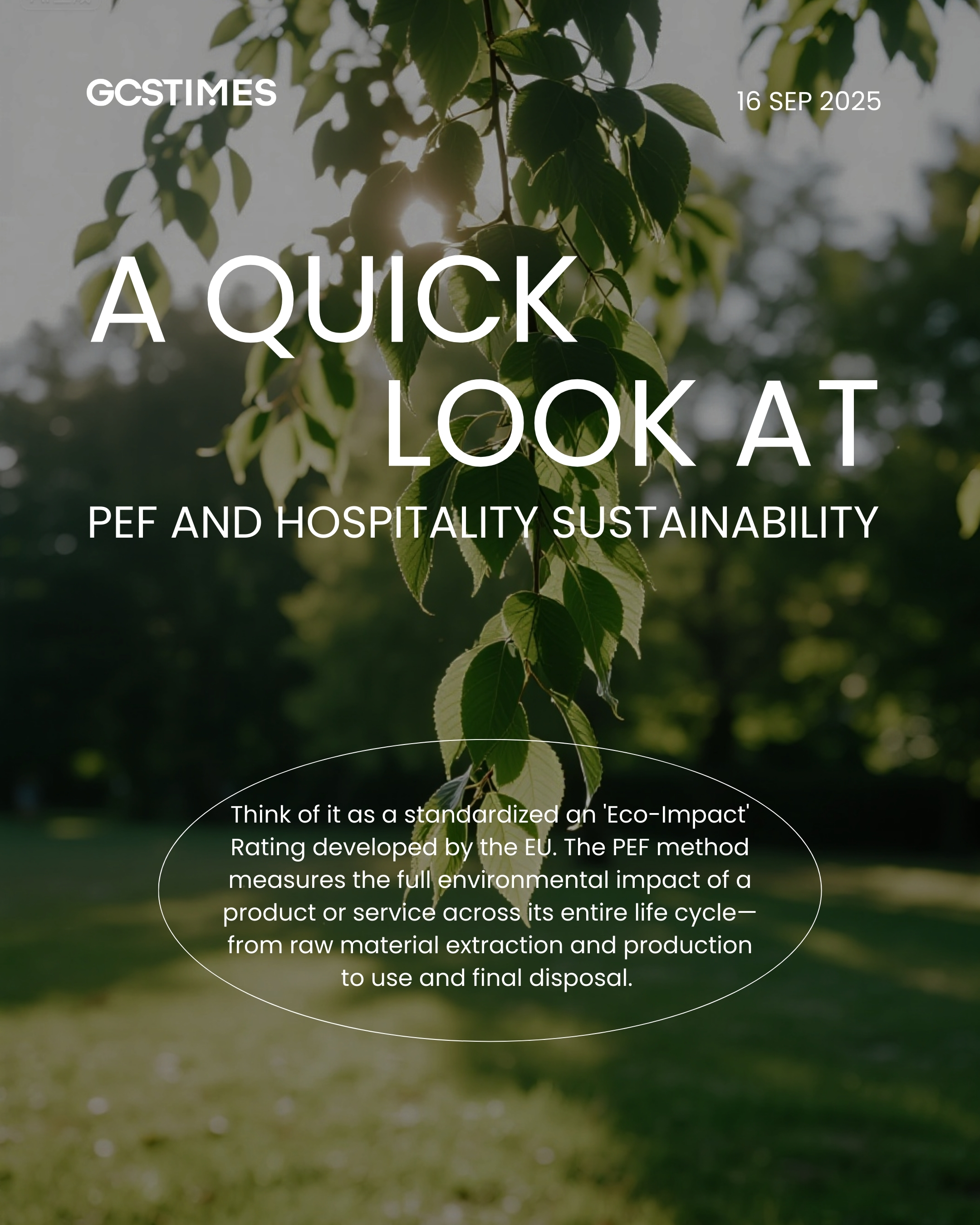For leaders in the hospitality industry: Are you ready for the Product Environmental Footprint (PEF)? It's more than just another acronym, it's set to change how we measure and communicate sustainability.
So, what exactly is PEF?

Think of it as a standardized an 'Eco-Impact' Rating developed by the EU. The PEF method measures the full environmental impact of a product or service across its entire life cycle—from raw material extraction and production to use and final disposal.
Here’s how it directly impacts hospitality groups, especially in Europe:
Holistic Service Measurement: PEF isn’t just for physical products. It can be applied to your entire hotel service. This means calculating a verifiable footprint for accommodation, F&B operations, laundry, spa treatments, and even the amenities in your guest rooms. This moves us beyond simple carbon tracking to a
much richer, multi-indicator assessment.
Smarter, Data-Driven Sourcing: As sustainability reporting under EU directives like CSRD becomes mandatory, you need reliable data. PEF provides a consistent, science-based "ruler" to compare suppliers. You can now choose partners—from linen providers to food vendors—based on their verified environmental performance,
not just their marketing claims.
The Future of Green Claims: The EU plans to make PEF a key tool for substantiating any "green" or "eco-friendly" marketing claims. This means the era of vague sustainability statements is ending. Hotels operating in Europe
will face increasing pressure to ensure their services and supply chains are PEF-compliant to avoid greenwashing risks.
In short, PEF is shifting sustainability in hospitality from a marketing narrative to a core, data-driven business strategy. It’s a challenge, but also a massive opportunity to build genuine trust with your guests and stakeholders.